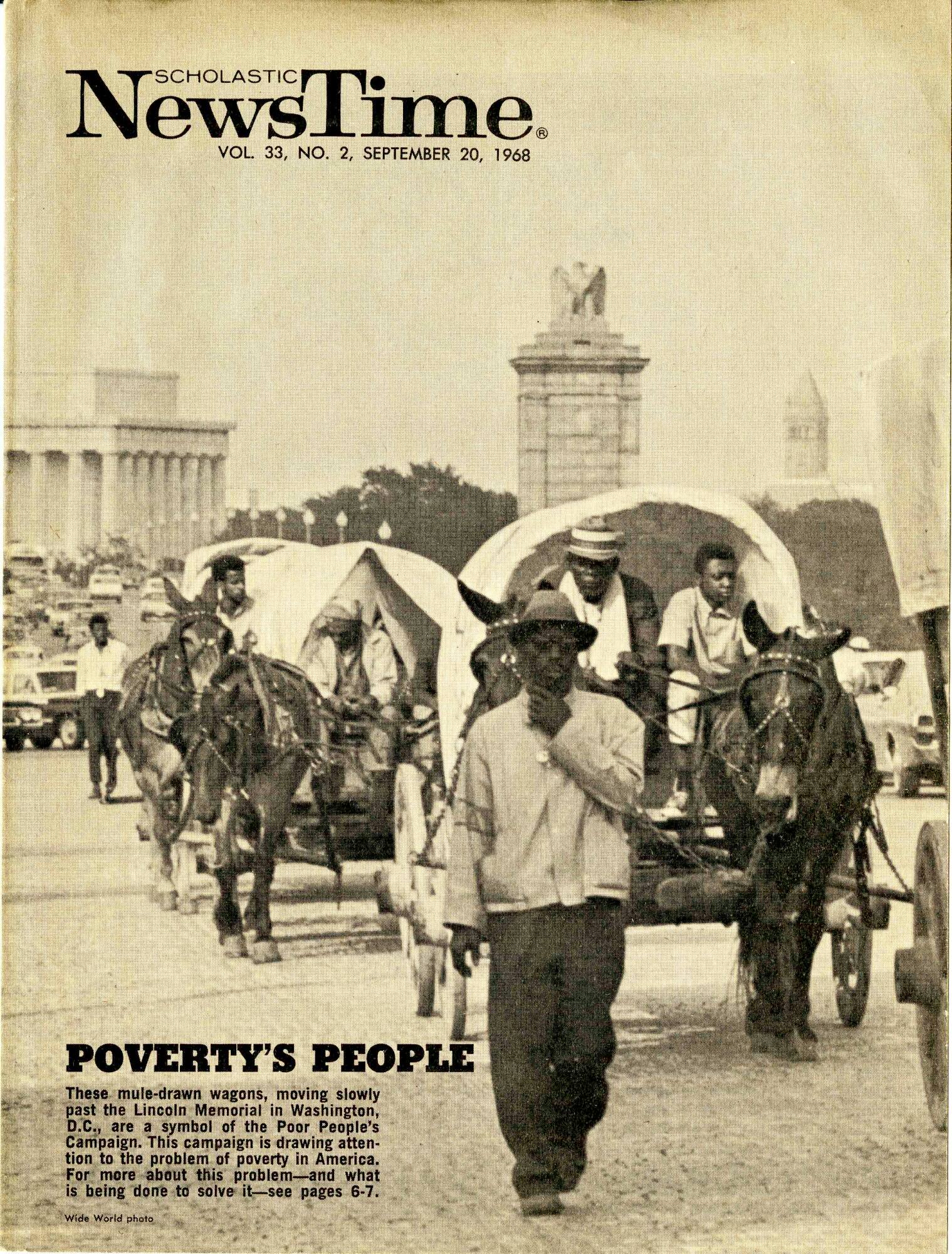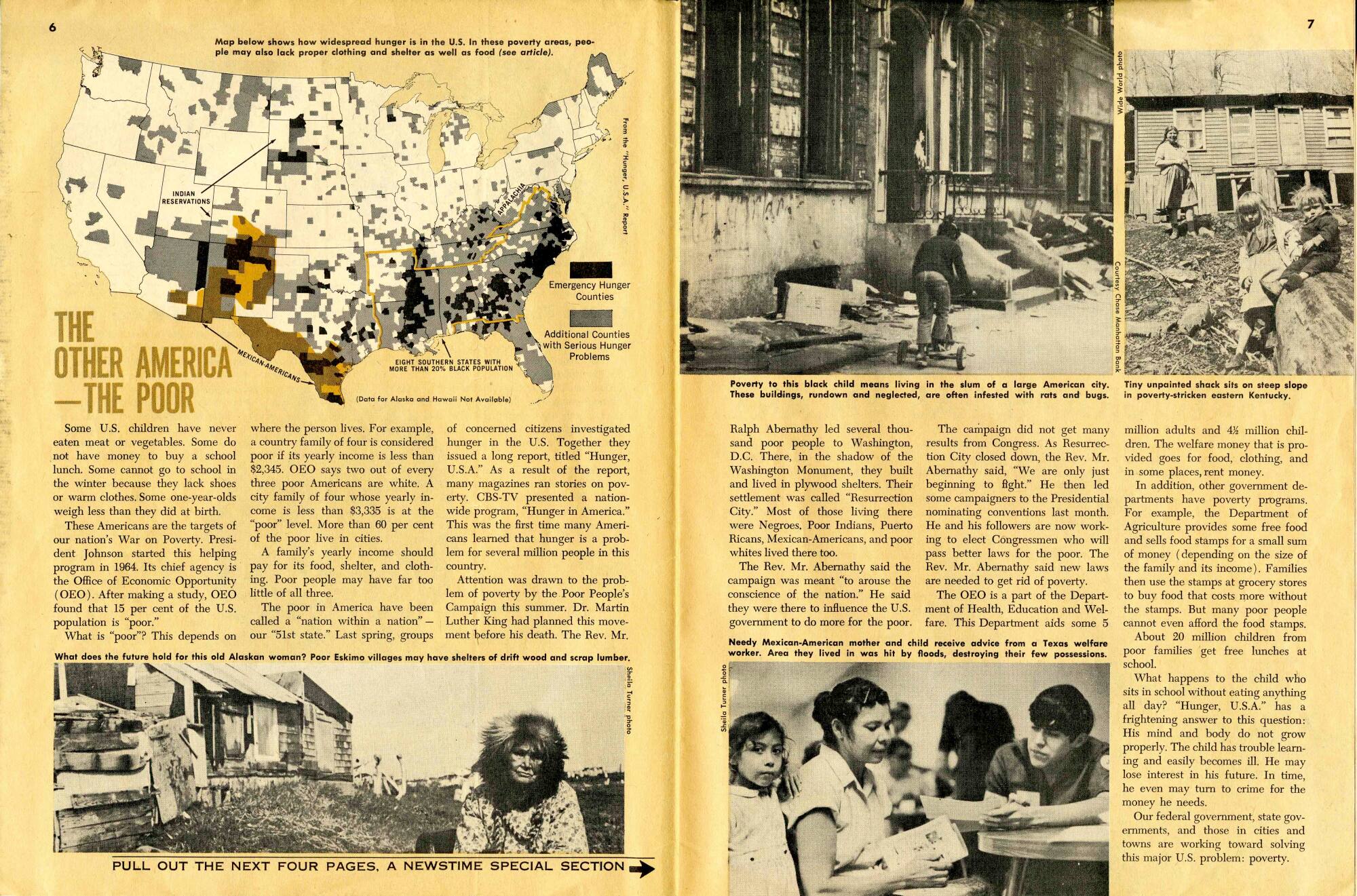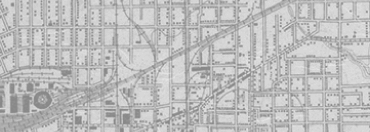


Back
Scholastic Newstime Magazine, Vol. 33 No. 2, 09/20/1968
This issue of Scholastic NewsTime Magazine, Vol. 33 No. 2. from September 20, 1968 features a cover story about the Poor People's Campaign. The Poor People's Campaign was organized by the Southern Christian Leadership Conference. The main article in this magazine on Pages 6 and 7 highlights the problem of poverty, specifically focused on children growing up in poverty in the 1960s.
Scholastic Newstime Magazine, Vol. 33 No. 2, 09/20/1968
09/20/1968
Paper
11 1/8 × 8 3/8 in. (28.3 × 21.3 cm)
The Sixth Floor Museum at Dealey Plaza Collection
2022.011.0001
The mule train pictured on the cover of this Scholastic NewsTime left Marks, Mississippi, on May 13, 1968, and arrived in Washington, D.C. more than a month later on June 19. Consisting of fifteen covered wagons drawn by two mules each, the mule train arrived just one day before local law enforcement began the difficult multi-day eviction of Resurrection City. Nevertheless, it remains the most recognizable image associated with the 1968 Poor People's Campaign. -- Stephen Fagin, Curator
The Poor People's Campaign was envisioned by Rev. Martin Luther King Jr. as a multi-ethnic coalition of poor people from across the United States. It was meant to draw attention to the plight of the poor, whether they were from urban ghettos or rural Appalachia. Dr. King was assassinated before the campaign could come to fruition, but Rev. Ralph Abernathy vowed to carry on the campaign in honor of Dr. King. The campaign culminated in a 16-acre encampment, Resurrection City, occupied by more than 3,000 poor people on the National Mall in Washington, D.C. from May 21 to June 24, 1968. - Stephanie Allen-Givens, Collections and Exhibits Manager
A new incarnation of the Poor People's Campaign, inspired by the 1968 campaign, is active today. You can learn about it here: https://www.poorpeoplescampaign.org/about/ - Stephanie Allen-Givens, Collections and Exhibits Manager

Scholastic Newstime Magazine, Vol. 33 No. 2, 09/20/1968
This issue of Scholastic NewsTime Magazine, Vol. 33 No. 2. from September 20, 1968 features a cover story about the Poor People's Campaign. The Poor People's Campaign was organized by the Southern Christian Leadership Conference. The main article in this magazine on Pages 6 and 7 highlights the problem of poverty, specifically focused on children growing up in poverty in the 1960s.
Scholastic Newstime Magazine, Vol. 33 No. 2, 09/20/1968
09/20/1968
Civil rights
Magazines
1960s
Poor People's Campaign
Scholastic NewsTime
Paper
11 1/8 × 8 3/8 in. (28.3 × 21.3 cm)
The Sixth Floor Museum at Dealey Plaza Collection
2022.011.0001
The mule train pictured on the cover of this Scholastic NewsTime left Marks, Mississippi, on May 13, 1968, and arrived in Washington, D.C. more than a month later on June 19. Consisting of fifteen covered wagons drawn by two mules each, the mule train arrived just one day before local law enforcement began the difficult multi-day eviction of Resurrection City. Nevertheless, it remains the most recognizable image associated with the 1968 Poor People's Campaign. -- Stephen Fagin, Curator
The Poor People's Campaign was envisioned by Rev. Martin Luther King Jr. as a multi-ethnic coalition of poor people from across the United States. It was meant to draw attention to the plight of the poor, whether they were from urban ghettos or rural Appalachia. Dr. King was assassinated before the campaign could come to fruition, but Rev. Ralph Abernathy vowed to carry on the campaign in honor of Dr. King. The campaign culminated in a 16-acre encampment, Resurrection City, occupied by more than 3,000 poor people on the National Mall in Washington, D.C. from May 21 to June 24, 1968. - Stephanie Allen-Givens, Collections and Exhibits Manager
A new incarnation of the Poor People's Campaign, inspired by the 1968 campaign, is active today. You can learn about it here: https://www.poorpeoplescampaign.org/about/ - Stephanie Allen-Givens, Collections and Exhibits Manager











